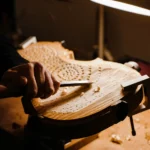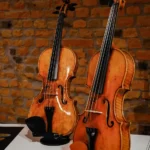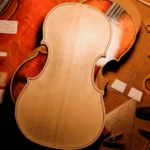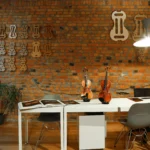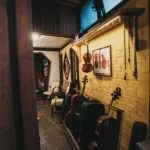The Art and Ethics of Restoring Historical Violins
Back to BlogRestoration as Responsibility
Restoring a centuries-old violin is not merely a craft—it is an ethical and artistic duty. These instruments are not just musical tools; they are cultural artifacts, carrying the soul of the maker, the voice of history, and the memory of the musicians who played them. At Amorim Fine Violins, we approach every restoration with reverence, care, and informed restraint.
Understanding Historical Value vs. Functional Restoration
Not all restorations are created equal. Some aim to bring an instrument back to performance condition, while others prioritize conserving its historical features—even at the expense of tonal output. Ethical luthiers must weigh these goals delicately: How do we honor the original while allowing the violin to speak again?
A responsible restoration begins with documentation. Before a single adjustment is made, the instrument is photographed, measured, and acoustically evaluated. This ensures a clear record of its original state and provides a roadmap for restoration that respects its lineage.
Techniques That Respect the Original Craft
At Amorim, we employ only reversible and historically accurate methods. Cracks are stabilized with hide glue, Missing components if any —are recreated using matching tonewood from the same period, when possible.
In most cases, we maintain wear marks, varnish degradation, and original fittings, as they offer insight into the violin’s life and story. Only when such features threaten structural integrity or sound production do we intervene.
The Ethics of Modernization
Controversy often arises when old violins are modernized for contemporary performance. Neck grafting, fingerboard lengthening, and bass bar replacement may make an antique violin more playable, but they also risk erasing the intentions of the original maker.
At Amorim, we consider whether such changes are essential or elective. Can the violin perform within its historical configuration? If not, can alterations be made in a way that is both acoustically sound and fully reversible?
Preservation Through Provenance and Transparency
Restoration is not complete without a thorough provenance record. We provide clients with detailed reports outlining every intervention, supported by before-and-after images and technical commentary. This documentation not only adds credibility but also preserves the instrument’s value for future custodians.
Clients are also advised on long-term care—how to store, humidify, and maintain their instrument after restoration—ensuring that the work done is protected over time.
Guardians of Musical Legacy
Restoring a historical violin is a privilege that demands humility. Each intervention is a conversation between centuries—a meeting of hands across time. At Amorim Fine Violins, we see restoration as both an ethical stance and an artistic discipline.
We do not aim to make old violins new, but to make their voices heard once more, in harmony with their heritage. For collectors, performers, and historians alike, our restorations are promises: that the soul of the instrument remains intact.
To explore our process or request an evaluation, contact us and begin your journey in preserving sound through time.





